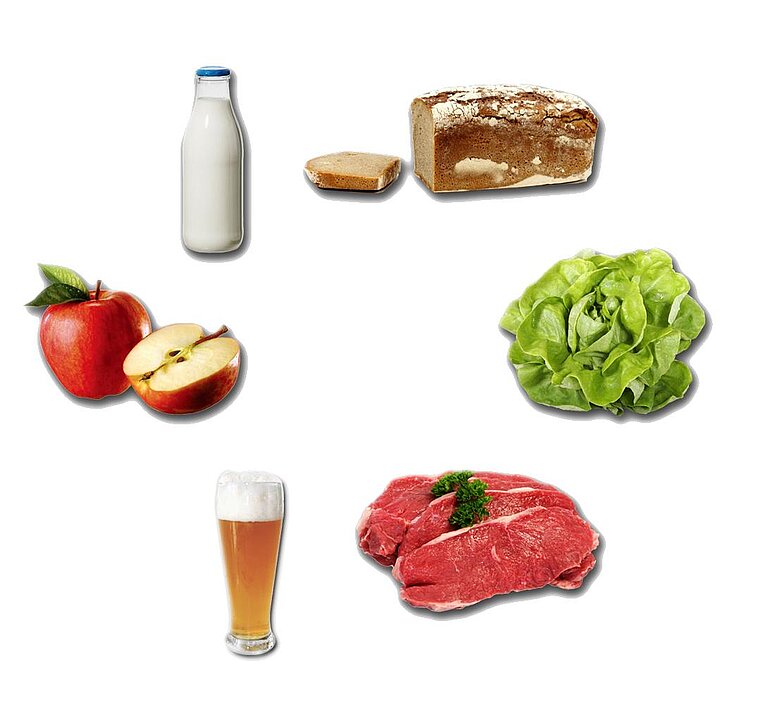Ecological Optimization of Regionally Produced Food: Energy and Greenhouse Gas Balances

Regional food products are quite popular with consumers. They are often considered to be more environmentally and socially compatible than comparable foods from supraregional or international production. But this assumption is not always correct. In addition to the place of production, a whole range of other factors determine how recommendable a food product is from a climate protection point of view. The production conditions, the processing, packaging and distribution of the food are important, as well as the season or the behaviour of the consumer.
For this project, regional foods were compared with products from national and international production and distribution. Using six food products (apple, lettuce, beef, beer, bread and milk) as examples, energy consumption and greenhouse gas emissions for the entire life cycle were calculated - i.e. from production through packaging and distribution to the consumer's shopping trolley.
The results show that regional food does not necessarily perform better from an environmental point of view because it is grown regionally. For example, in winter, lettuce from Spain has a better climate gas and energy balance than lettuce produced regionally in a heated greenhouse. In any case, however, the most important influencing factor is the consumer himself. Their shopping and consumption behaviour is decisive for the environmental footprint of the food: if the consumer drives by car to the shop to buy only one piece of food, the actual production of the food plays merely a subordinate role. This ultimately destroys all the advantages of environmentally sound production. Large purchases with reduced travel distances, e.g. through small detours on planned trips, or purchases on foot or by bicycle are much more advantageous. If the consumer then buys regional food from seasonal production, they are generally on the safe side in terms of resource conservation and climate protection.
The results - also for the individual food items - can be found in detail in the short and long version of our studies.
Project results and downloads
The project results are available in the following publications (in German), each with a different depth of presentation:
- Studie "Ökologische Optimierung regional erzeugter Lebensmittel: Energie- und Klimagasbilanzen" (60 S., 680 kB)
- Short Version (2 S., 58 kB)
- Gesamtbericht "Regionale Erzeugung, Verarbeitung und Vermarktung von Lebensmitteln" (233 S., 3,8 MB)
- IFEU-Studie zur Ökobilanz Brot (4 S., 41 kB)
